Exploring Ustrasana: From Foundations to Advanced Practice
Unveil the intricacies of Ustrasana, the Camel Pose, as we consolidate foundational elements, guide you through progressive stages, and explore ways to enhance and deepen your practice. Discover the journey from beginner to advanced in this comprehensive exploration of the pose.
Understanding Ustrasana
Ustrasana, or Camel Pose, is a kneeling backbend in yoga. It involves arching the back and reaching the hands toward the feet, creating a deep stretch in the front of the body. This opens the chest and encourages flexibility in the spine, making it a dynamic and invigorating yoga pose.
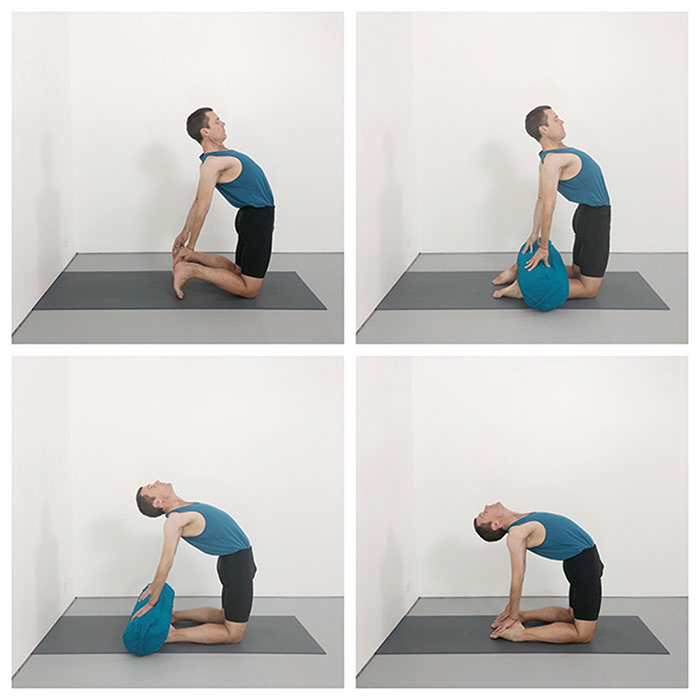
Four Stages To Learning Ustrasana
Although Ustrasana (Camel Pose) is commonly practiced by students who are newer to backbends, it shares common techniques with more advanced asanas, and is an ideal pose with which to start deepening your understanding of backbends. It is also a pose where individuals can get first hand experience of how Iyengar yoga methods can transform something that might initially feel cramped and uncomfortable, into a pose with space and a feeling of composure.
Structured Approach: Learning Ustrasana Safely and Effectively
This post looks at a ways of learning Ustrasana in stages. These methods will be well suited to newer students, and will help to impart an understanding of how to safely practice this key backbend.
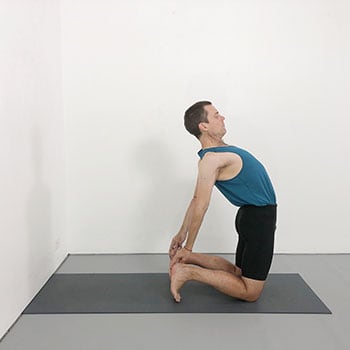
Stage 1. Getting Started: Foundational Ustrasana Variation
This version of Ustrasana is an ideal starting point when you are new to the pose. Having your toes tucked under like this elevates your heels making them easier to reach. It also helps to keep your body weight forwards. You are aiming to keep your hips slightly forwards of your knees. Don’t allow your toes to become compressed. Press them into the floor to lift the heels higher. When your fingertips reach the heels maintain this lift.
Key points: hips forwards, chest upwards.
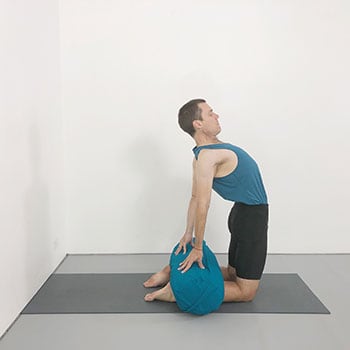
Stage 2. Supported Ustrasana Variation: Gaining Comfort and Lift
This version of the pose enables you to have your shins flat to the floor. The bolster placed over the lower calf gives the fingertips a solid support without needing to reach back as far as the feet. This enables you to get a taste of the pose whilst remaining in a more upright position. The gaze can either remain forwards in this position or you can begin to look up.
Key Points: Press the lower shins/ankles down to move your hips forwards. Press your fingertips firmly down into the bolster to lift your chest upwards.
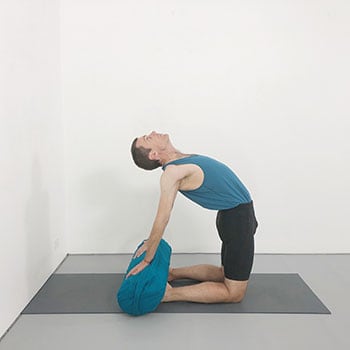
Stage 3. Progressing Further in Ustrasana
This version of Ustrasana is a development of the previous position. The bolster is now moved further back so that it rests on the soles of your feet. Your hands come further back and down to reach the bolster. This brings you a little deeper into the backbend. Check that it is only your arms and shoulders that reach further back, your hips and chest remain forwards. Your hands press firmly down on the bolster without slipping towards the toes. You can begin to look up and slightly back without dropping your head. This version of the pose allows people with tight shoulders to have their hands slightly wider than their feet.
Key points: Press the tops of your feet down without rolling towards the big toe side. Lift the backs of your thighs up as you move your hips forwards. Use your shoulder blades to lift and open your chest.
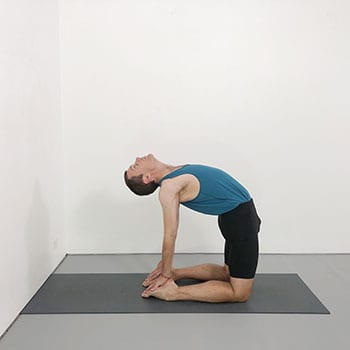
Stage 4. Ustrasana: the Full Pose and Beyond
It is important to be able to access the region of the lower shin in order to generate lift in Ustrasana. Ideally this part of the leg presses firmly down into the floor. This action of having the shins flat to the floor does not come easily for many bodies. In order to emphasise this contact, a rolled blanket can be placed under the lower shins. The hands now can come further back. Starting with your fingertips on the heels, you begin to bring the palms down flat to the soles of the feet.
Key points: Shins press down, backs of the thighs lift up, fronts of the thighs draw downwards, move the part of the spine between the shoulder blades deep into the body.
Camel Pose: Going Deeper
Ustrasana can be seen as a transition pose that links preparatory backbends with more advanced backbends. Techniques used in this pose will be consistent and complimentary with techniques used in more challenging poses. The below sequence shows you how to progressively deepen your Ustrasana practice in stages. The methods explored here will help you to maximise chest opening in the pose, whilst minimising the risk of injury to your lower back. This approach to the pose will help to keep your backbend practice on a healthy trajectory as it evolves over time.
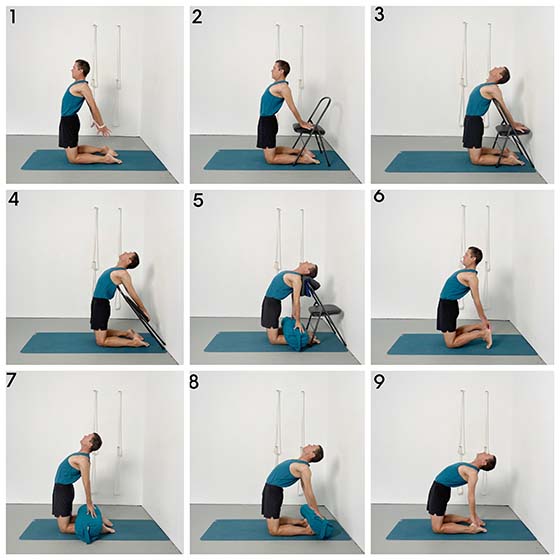
Optimise Your Ustrasana: Nine Techniques for Improvement
In this yogaselection.com class, we present nine effective methods to enhance your Ustrasana (Camel Pose) practice. The sequence emphasises essential techniques of the traditional posture while delving into supportive modifications. It includes chair adjustments that aid neck support and thoracic spine opening. Gradually advancing towards the classical form without props, the session prioritises a strain-free approach for the lower back and neck. This practice offers therapeutic advantages and also enriches your comprehension of this invigorating backbend.
Access Specialised Yoga Courses at Yoga Selection
To access similar and related material to this Ustrasana article simply visit yogaselection.com. As a member of Yoga Selection, you’ll have access to a wealth of specialised yoga courses. Explore our huge video library, which offers over 650 on demand classes, including courses, classes and articles that focus on specific aspects of authentic yoga practice.
Become a Yoga Selection member and enjoy the freedom of unlimited access to our diverse range of courses. With two new videos released every week, you’ll always have fresh content to explore and build into your practice. For a more personal experience, join live classes in real time, where you can receive guidance and support from experienced teachers.
Share:
See related posts:
